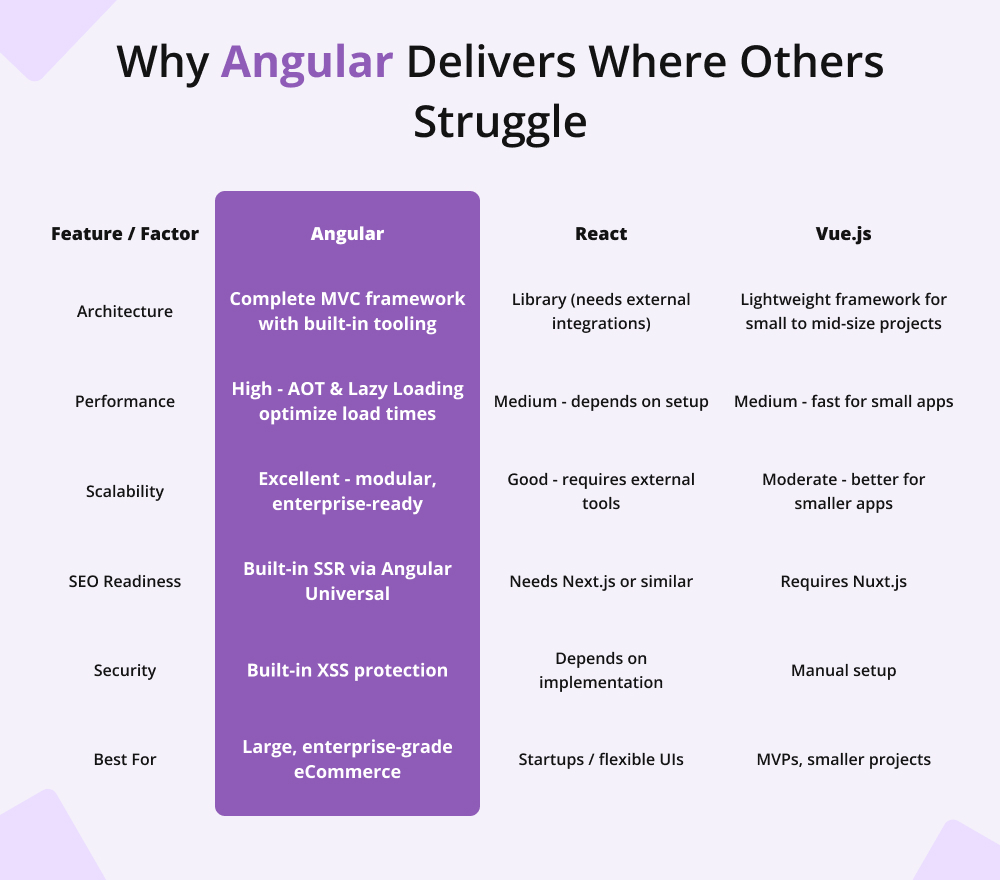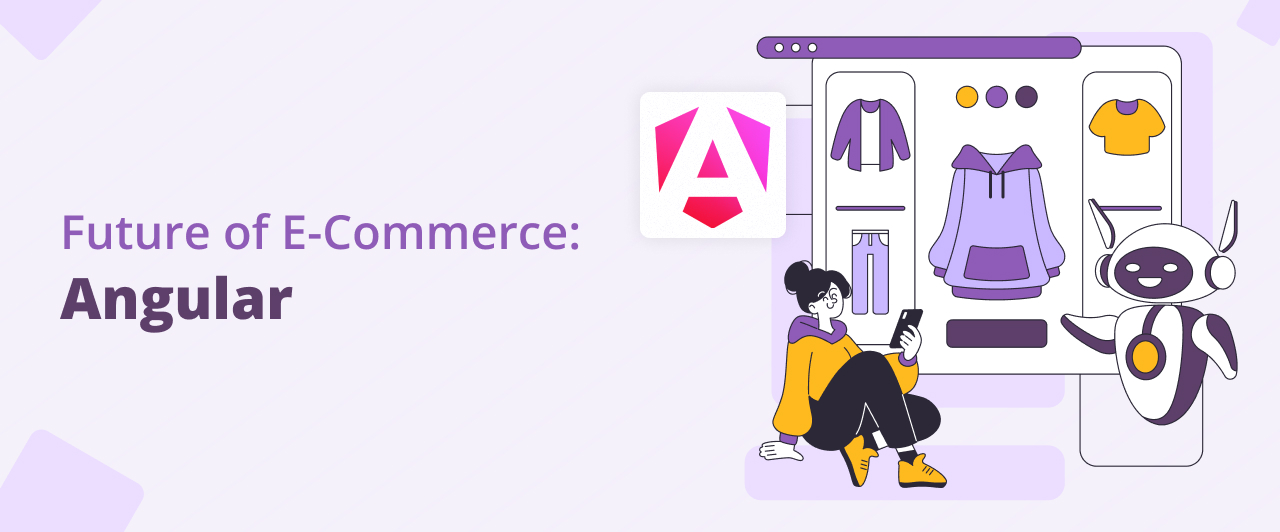



By now, every serious eCommerce brand knows that fast websites alone don’t win customers, great experiences do. People expect everything to load instantly, feel personal, and run smoothly whether they’re on a phone in New York or a tablet in Tokyo.
But here’s the problem: most eCommerce platforms weren’t built to handle that kind of pressure. The tech stack you pick can make or break your growth. And that’s exactly why Angular keeps showing up as a favorite among top development teams, not because it’s flashy, but because it just works when things get big and complicated.
The rules of online selling have changed. A few years ago, you could get by with a fast site and decent design. Today, that’s the bare minimum.
You’re competing in a space where Core Web Vitals, AI personalization, and mobile-first experiences directly decide whether a customer stays or leaves. That means your front-end framework needs to do more than just render pages. It has to handle scale, speed, SEO, and security - all at once.
That’s a tall order. And it’s where Angular shines.
Angular isn’t new. It’s not trendy. But that’s actually its strength. It’s proven. It’s reliable. And it’s evolved into one of the few frameworks that can handle complex, high-traffic eCommerce apps without falling apart.
You can build in modules, your product catalog, cart, checkout, loyalty system, all live as separate, reusable pieces. Want to change one? You don’t risk breaking the rest. That modularity is a lifesaver for fast-moving teams.
Angular’s Ahead-of-Time (AOT) compilation and tree shaking basically clean up your code before it ever hits the browser. Add lazy loading on top, and users only download what they need when they need it. That’s how you keep your store feeling lightning fast even with thousands of products.
Single-page apps used to have a bad reputation with search engines. Angular changed that with Angular Universal, allowing server-side rendering so Google and Bing can actually read your pages like normal websites. That means faster indexing, better visibility, and higher organic traffic.
Angular isn’t just for startups, it’s trusted by enterprises because it’s stable, secure, and backed by Google. It comes with built-in protections against cross-site scripting and other vulnerabilities, so your store and your customers stay safe.

Here’s where Angular gets interesting in 2025.
It’s not just about performance anymore, it’s about delivering experiences that feel alive.
With Progressive Web App (PWA) support, your site can work offline, load instantly, and even send push notifications, all without needing a separate mobile app. For users, it feels native. For brands, it means less friction and more engagement.
And Angular’s new signal-based reactivity model makes everything smoother behind the scenes. Real-time updates like inventory changes, price adjustments, or live recommendations happen faster and with less complexity. That’s a quiet but huge win for developers and customers alike.
Then there’s the future-facing stuff: headless commerce and micro-frontends. Angular fits perfectly here. You can connect it to any API-driven backend or headless CMS, giving you complete flexibility. Your marketing team can roll out new campaigns, your developers can ship updates and both can do it without getting in each other’s way.
Let’s skip the buzzwords and talk outcomes.
Companies that switch to Angular often see:
You end up with a platform that isn’t just faster, it’s easier to maintain, more flexible to evolve, and stronger as your business grows. That’s not something you can fake with plugins or patches.
It’s fair to admit that Angular isn’t for every project.
If you’re building a small storefront or an MVP, the setup might feel heavier than necessary. Frameworks like Vue or Svelte can be quicker to start with.
But once your business scales and you’re adding complex features think live tracking, multi-vendor modules, or AI recommendations, you’ll wish you had Angular’s structure. Its discipline pays off when your store moves from “startup” to “serious business.”
The best Angular projects don’t happen by accident. They’re well-planned.
Start by defining your architecture early on how modules will connect, how routes will load, and how you’ll handle SSR for SEO.
Build reusable UI components, it saves months of rework later.
And always bake in testing and performance audits from day one. Angular makes this easier than most frameworks, so take advantage of it.
The key is to think long-term. You’re not just building a store; you’re building a system that needs to evolve without slowing down.
Angular has lasted this long for a reason, it delivers. It’s not chasing hype; it’s refining what already works.
In 2025, when eCommerce moves faster than ever, reliability matters.
It gives teams structure without limiting creativity, speed without sacrificing control, and the kind of stability that makes growth feel manageable.
If your next project demands performance, scale, and confidence in the long game, it might be time to build with Angular and work with an AngularJS development company that knows how to turn that framework into real business results.
Are You Prepared for Digital Transformation?
ReactJS Development
Explore the key differences between React and Next.js to choose the best framework for fast, scalable, and future-ready front-end development.
Python Development
Discover why React and Python are the go-to stack for fast, scalable web apps. Build modern UIs with React and powerful backends with Python.
Java Development
Discover the 7 best Java frameworks for web app development. Build scalable, modern applications with tools like Spring Boot, Quarkus & more.